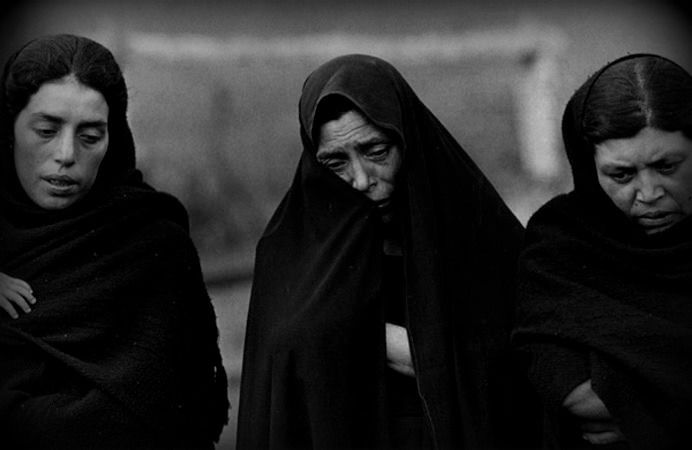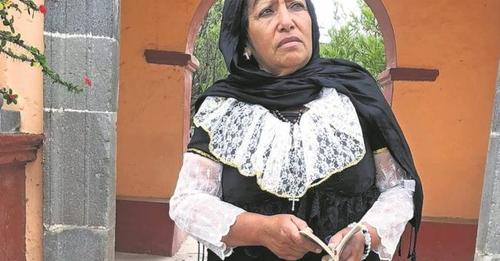The mourners, women who charge for crying
Mourners are one of the strangest funerary professions. This is how the tradition of crying for money came about.

Death plays a role in Mexican culture, in which its reality is affirmed with diverse manifestations. As a consequence, death has generated different occupations that revolve around death. Perhaps one of the strangest funeral services is that of the mourners, women who are paid to cry at funerals.
Mourners in the ancient world
The office of mourners appeared in ancient Egypt, as there was a taboo that forbade showing sadness for the death of a deceased. Because of this, women were hired to do this work. In that culture, the mourners were called yerit, who transmitted the trade from mother to daughter. Yerit attended funerals with blue dresses, loose hair and arms held high as a sign of suffering.
The use of mourners was also part of Greek culture, they are even mentioned in the Coeforas of Aeschylus. In this tragedy, they are described as women with black veils. The custom of the mourners was maintained in Roman civilization, who refined their use. In this culture, mourners were called praeficas, and their use, the greater the number, in a funeral was a sign of social status. In addition, they implemented the use of tear gas, glasses in which tears were collected to bury them next to the dead.
Crying in Pre-Hispanic Mexico
In the Nahuatl culture, crying had complex psychology, which is why it is probably the main factor for the appearance of Mexican mourners. According to the testimony of Diego Durán, during the funeral of Governor Ahuízotl, a "great weeping" was used. Such rites could extend for up to four days, however, there were events in which people cried for up to 80 continuous days.
In these cases, crying was believed to accompany the deceased on their journey to Mictlán, so it can be considered a means of communication. In addition, the Mexica culture understood crying with a positive value, since it was the means to overcome political situations, maintain ties after separation, and strengthen the spirit.
Lamentations in the Semitic World
Meanwhile, in the Christian world, the use of lamenters has been censored since the Middle Ages. The main reason was that mourning for the dead represented an opposition to the Christian dogma of resurrection and eternal life. However, both Jewish and Christian religions share elements of ritual weeping. Even the biblical book of Jeremiah mentions the use of tears as a means of intercession between Yahweh and Israel.
For its part, the New Testament shows the image of women in intense mourning after the death of Jesus, mainly in the figure of the Magdalene. As for Islam, during Muslim Spain was used the use of mourners as a status symbol. However, the mourners themselves were associated with madness and the office was stigmatized.
Mexican Mourners
Until recently the use of mourners was a tradition in different regions of Mexico. At the same time, Mexican mourners gathered different elements from their predecessors. In most cases, the use of mourners was intended to strengthen the reputation of the deceased. However, some of them also served as prayers and companions to the bereaved.
Mourners used to attend funerals dressed in black clothes and veils. Unlike other cultures, the mourners of Mexico tried to make the mourners go deeper into the pain, so they sought to make the mourning sincere. Currently, the custom of hiring mourners is in decline, however, the tradition has evolved in events such as the National Mourners Contest in San Juan del Río, Querétaro. This event is held annually in the context of the Day of the Dead and the participation of weeping women is increasing.

Mexico's "best mourner"
Dressed in mourning and with rosary in hand, Ofelia Ramirez Arteaga, 57, falls to her knees in front of a grave, in utter grief. It is two minutes of anguish. Her crying gets louder as the seconds pass and is only interrupted when she sucks in a breath of air. The sobbing returns and she cries looking at the sky: "You took him away Lord, you took him away, oh Lord, what pain! Ramirez is not at a funeral, nor is she visiting a loved one. The scene is part of the video that won her first place in a contest that rewards the best mourner in Mexico. The competition, which this year has reached its 15th edition, seeks to revive - or rather, remember - a lost tradition in the country: the mourners, women hired by wealthy families to mourn during wakes.
The contest has been held telematically for the second year in a row. Before the pandemic, women used to show their best crying in front of the public and the jury. But since the health crisis began, the organizers of the Institute of Culture, Tourism, and Youth of San Juan del Rio, a population 138,000 and two and a half hours from Mexico City, decided that it would be best for mourners to send videos of up to two minutes by e-mail. This new format has opened up the competition, which historically had a majority of women living in the town or nearby villages, to applicants from all over the country.
It was thanks to this that Katlin Chavez, 34, who lives in the northern city of La Paz (1,5000 kilometers from the award's headquarters) won first place last year. On the other end of the phone, the actress tells how she decided to send her video while drinking a caña with a friend with the iconic song La llorona by Chavela Vargas in the background. "I remember I commented to her: How good it is to cry from laughter". Precisely in her interpretation, she makes an abrupt change from a smile that turns into a sob. She has not been the only one who has given it that twist. Another contestant of that edition dedicated a cry to her menstrual period because, in that act, she had reached menopause.
This funny way of looking at death and suffering is part of Mexican culture, and is reflected in the joviality of the Day of the Dead, celebrated on November 1 and 2, dates on which the locality rewards mourners every year. Eduardo Guillén, director of the Institute of Culture, Tourism, and Youth of San Juan del Río, points out in a telephone interview that laughing at the dead is an indisputable characteristic of Mexican idiosyncrasy. However, in the 2021 edition, the jury has given preference to the most long-suffering crybabies and has given a special award to Mariana Rodas Aguilar, who begins her video dancing and then breaks that joy with a song from the Mexican soap opera La rosa de Guadalupe. Although, yes, she cries with a little hidden smile.
Second place went to Isidra Ávila Salauz, 65. Her short film provokes the same level of anguish like that of Ofelia Ramírez. The suffering is so palpable that for an instant her speech seems real. She sheds tears for her husband, the mayor of San Juan del Río, supposedly killed in a terrible flood. "Oh my God, quench this great pain I am feeling," she cries, dressed in black and hugging a grave, before throwing herself into the mud.
Avila, who has already competed four times and has also won first place in previous editions, says that this time the contest has been much more personal. "I feel that these two years have been cruel, very hard. We have not been able to cry what we would like to cry. We have not been able to accompany our loved ones." This year, Avila lost her mother, but she also had the birth of her first great-granddaughter. She tells it with a composure and an inner peace that at times conceals the fact that she is relating something that has to do with death. "That's how we Mexicans are," she says.
Mourners are practically extinct and can only be seen in some towns or films from the 1940s. It was thanks to those feature films by icons of Aztec culture such as Pedro Infante or Jorge Negrete that Ma Silveria Balderas Rubio, 59, took her inspiration to win third place: "I used to tell my family, as a joke, that I could cry like they do in those movies. She, who had already competed in 2020, didn't believe her eldest daughter when she told her she had made the podium. But she finally relented and went to receive her award.
For Balderas, beyond the financial prize - the municipality awards 170 euros to first place, 105 to second place, and 63 to third place - what is important is to pass on this tradition, which has fallen into disuse, to the new generations. "I do it so that young people learn about how it used to be and so that it doesn't get lost," he says. Guillén agrees with Balderas, and adds: "It is thanks to activities like this contest that [the tradition] is transferred to an aesthetic and documentary aspect". The official anticipates that in 2022 there will be a return to face-to-face competition, but thanks to the success of the distance competition, there will also be a telematic category.
Ofelia Ramírez, currently Mexico's best weeper, has participated in all 15 editions. Like almost all the contestants, she is not an actor. She is a housewife and has taken advantage of her talent to shed the tears she could not shed for years. According to her, she suffered abuse as a child and her mother did not let her continue studying. The acting was within her possibilities. She has often considered quitting. But she finds it impossible. Crying, paradoxically, brings her joy: "This is like French fries, you can't eat just one, you always want more".
Sources: El Periodico




